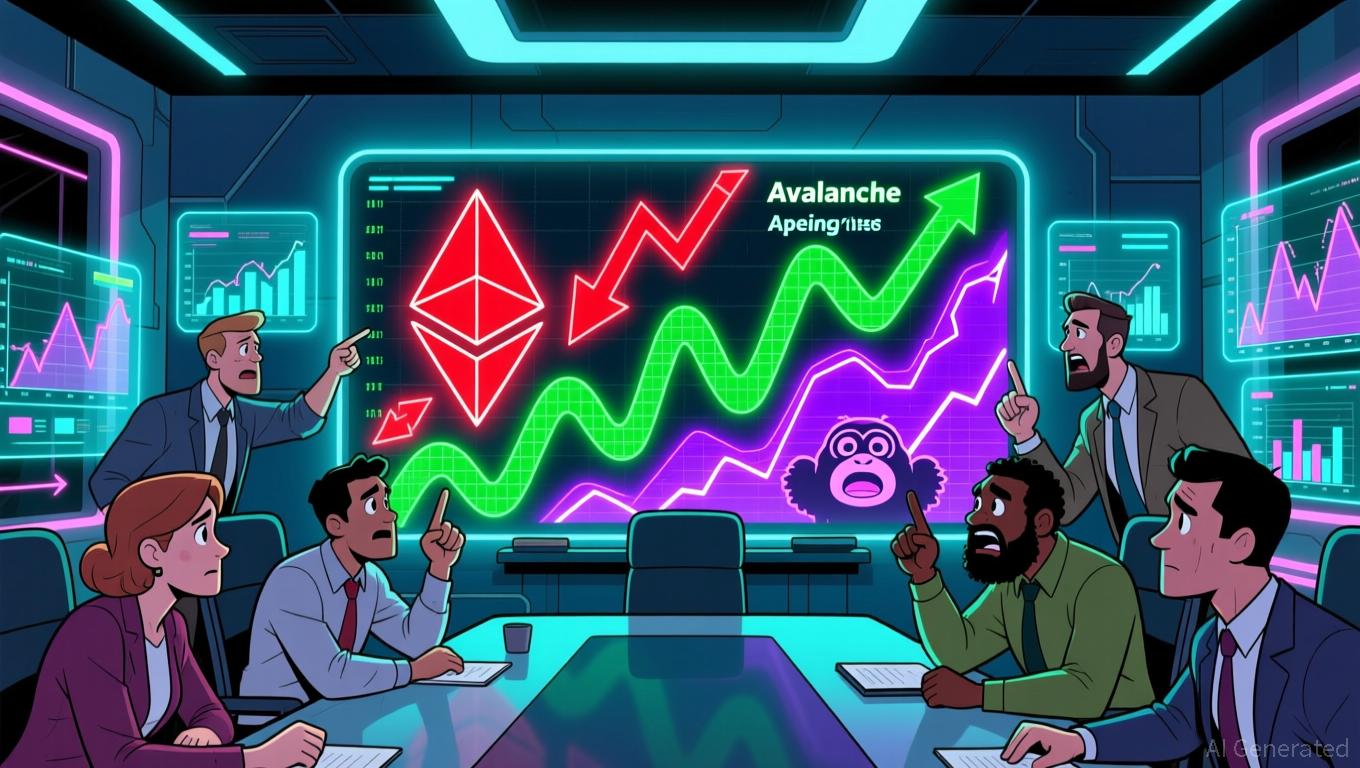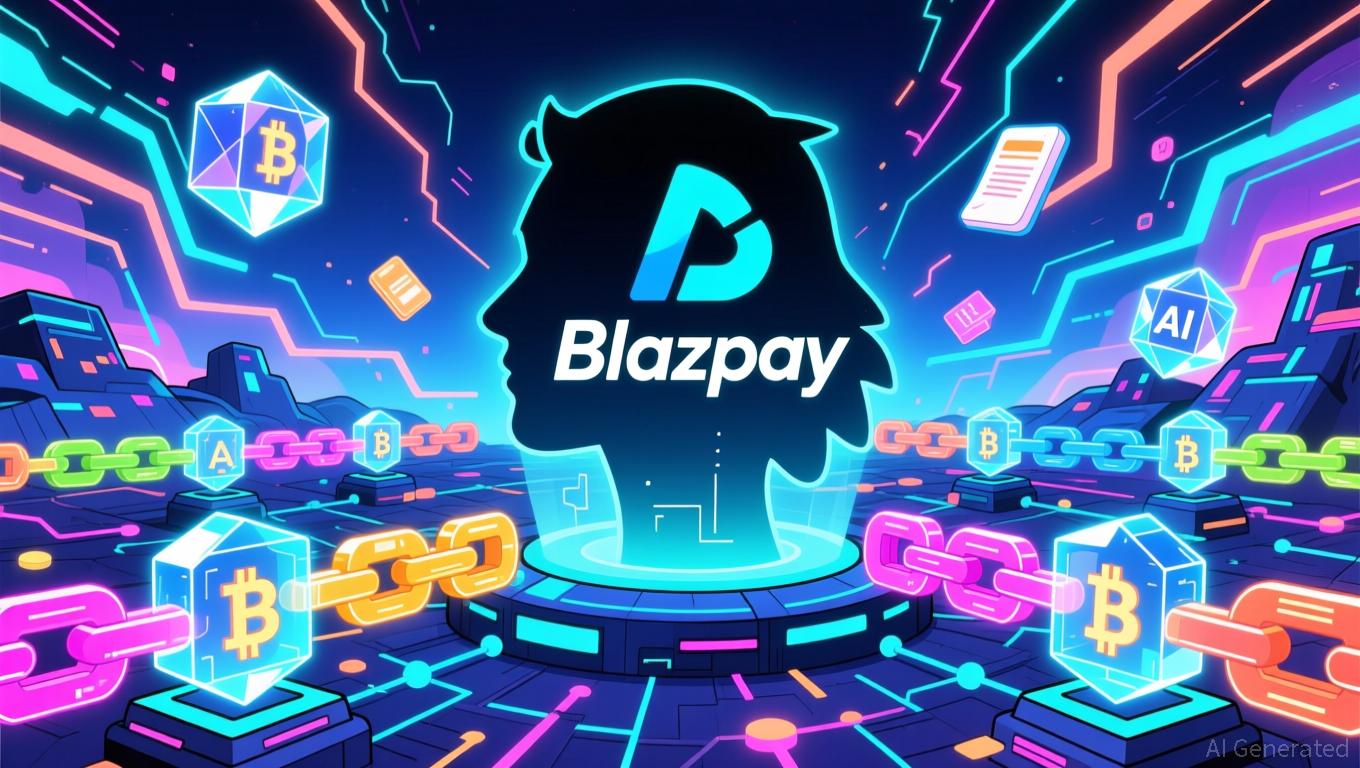TWT's 2025 Tokenomics Framework: Pioneering a Utility-Focused Approach to Value Generation in Web3
- Trust Wallet Token (TWT) 2025 model shifts from speculative hype to utility-driven value creation via ecosystem integration and user incentives. - TWT enables gas discounts, loyalty rewards, and governance rights, tying token value to active platform usage and adoption growth. - Supply constraints and burn events (88.9B tokens burned) create scarcity, contrasting inflationary DeFi models that risk devaluation. - Governance and cross-platform DeFi integration position TWT as a versatile asset, aligning us
Utility at the Heart of Value Generation
The 2025 iteration of TWT emphasizes rewards based on utility, shifting the token’s role from a speculative instrument to a practical asset for both users and developers.
One notable advancement is the reduction of gas fees. Users can acquire TWT without incurring gas costs and use it to offset transaction expenses elsewhere, making blockchain entry more accessible for newcomers. This feature not only improves the user journey but also encourages holding TWT, since larger balances unlock further discounts and governance options.

Managing Supply and Burn Events to Prevent Devaluation
The supply strategy for TWT further strengthens its long-term value. Soon after its introduction in 2020, a massive 88,999,999,900 TWT were permanently removed from circulation, creating scarcity and demonstrating a commitment to deflationary practices
The tiered loyalty program within Trust Premium illustrates this philosophy. Rather than issuing additional tokens, rewards are limited and linked to user engagement, such as staking or on-chain activity. By steering clear of inflationary incentives, TWT reduces dilution risks and builds a community that actively supports ecosystem growth
Transforming Value Capture in DeFi
Many traditional DeFi frameworks focus on short-term liquidity at the expense of lasting utility, resulting in unstable token prices. TWT’s 2025 model reverses this by embedding value in user participation. For example, TWT can serve as collateral in various DeFi platforms, broadening its use beyond Trust Wallet’s core offerings. This interoperability increases demand, as users seek TWT for both its discounts and its versatility across the DeFi landscape
Additionally, TWT’s governance function gives holders a voice in the platform’s direction. By distributing decision-making power, Trust Wallet builds community confidence and aligns the interests of developers and users. As noted in Bitget’s 2025 report, this governance structure reinforces TWT’s dual role as both a utility and governance token, setting it apart from tokens driven solely by speculation
Conclusion: Setting the Standard for Sustainable Tokenomics
The 2025 tokenomics design for TWT marks a significant shift in how Web3 projects approach value generation. By focusing on practical use, controlled supply, and user-led growth, Trust Wallet has built a system where TWT’s value is fundamentally linked to the ecosystem’s vitality. For investors, this presents a strong case: a token that becomes more valuable as adoption rises, rather than losing worth due to inflation or lack of engagement.
As the Web3 sector advances, those projects that successfully combine innovation with sustainability will lead the way. TWT’s strategy—anchored in tangible utility and community-driven governance—positions it as a progressive asset in an industry increasingly shaped by substance over speculation.
Disclaimer: The content of this article solely reflects the author's opinion and does not represent the platform in any capacity. This article is not intended to serve as a reference for making investment decisions.
You may also like
Ethereum Updates Today: 2025’s Crypto Shift: Apeing Emerges as a Reliable Trend, Overtaking Meme Coin Frenzy
- Apeing ($APEING) emerges as 2025's crypto standout, blending verified access, community energy, and strategic timing to redefine "early" adoption in meme coin cycles. - Unlike chaotic meme coins like Pepe (PEPE), Apeing's whitelist system prioritizes security and transparency, attracting both retail and institutional investors. - The project's hybrid model combines meme culture with operational rigor, contrasting with Ethereum's foundational role and Avalanche's infrastructure focus. - Market analysis hi

ARK Invest Purchases Cryptocurrency Shares, Anticipates Uptake by Institutions
- ARK Invest resumes buying crypto-linked stocks, adding $5.8M in BitMine and $2.9M in Bullish as both stocks declined. - The firm shifts capital from Tesla to undervalued crypto and fintech assets amid market volatility. - ARK's strategy targets long-term growth via institutional adoption and regulatory clarity in crypto sectors. - Recent investments include a $46M stake in Circle as crypto assets face regulatory challenges and market dips. - ARK's approach highlights confidence in a maturing crypto ecosy

Hyperliquid News Today: Hyperliquid Temporarily Halts Popcat—DeFi Faces Ongoing Tension Between Security and Decentralization
- Hyperliquid dominates DeFi derivatives with $30B+ daily volume and 80% market share via on-chain order books and dual-chain architecture. - Recent Popcat incident exposed vulnerabilities as $3M stablecoin manipulation caused $4.9M losses, forcing manual interventions against decentralized principles. - Broader DeFi risks highlighted by $220M+ losses in Balancer/Stream Finance, underscoring systemic fragility despite "money Legos" innovation. - Founder advocates modular infrastructure and HIP-3 incentives

Investors Rush Toward AI-Powered Cryptocurrency as Blazpay Reaches $1.3 Million in Presale
- Blazpay's AI-driven crypto presale nears $1. 3M as demand surges for its multi-chain DeFi platform with gamified referrals. - Early investors could see 25% price jumps in Phase 4, with analysts projecting 1,000% returns if token hits $0.10 by 2025. - Growing institutional interest in AI crypto and bullish altcoin trends highlight Blazpay's strategic position in the evolving DeFi landscape.
